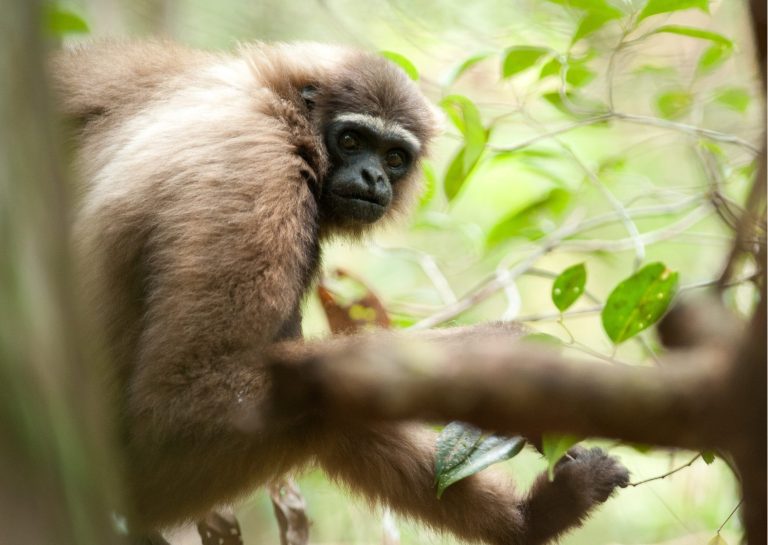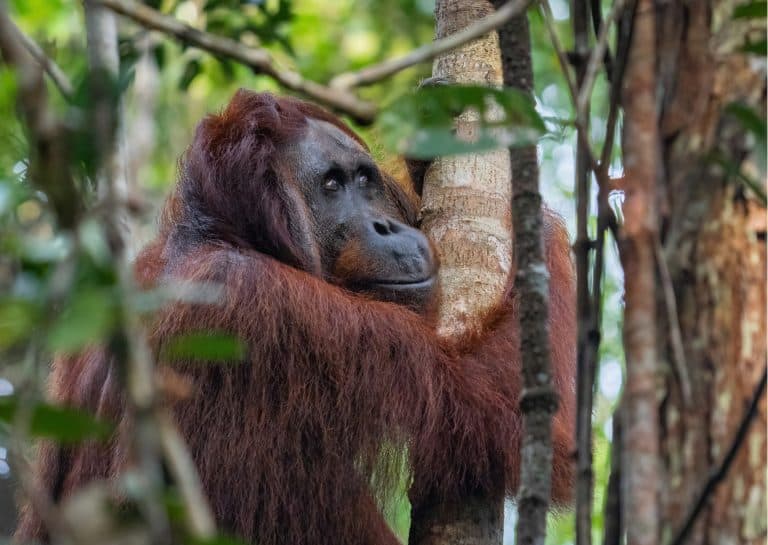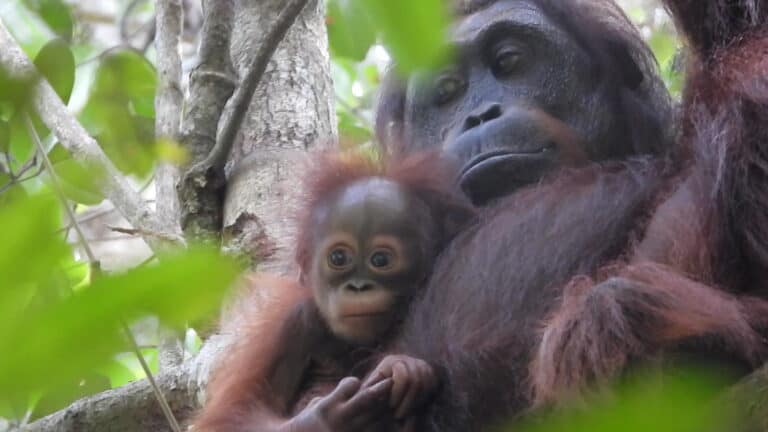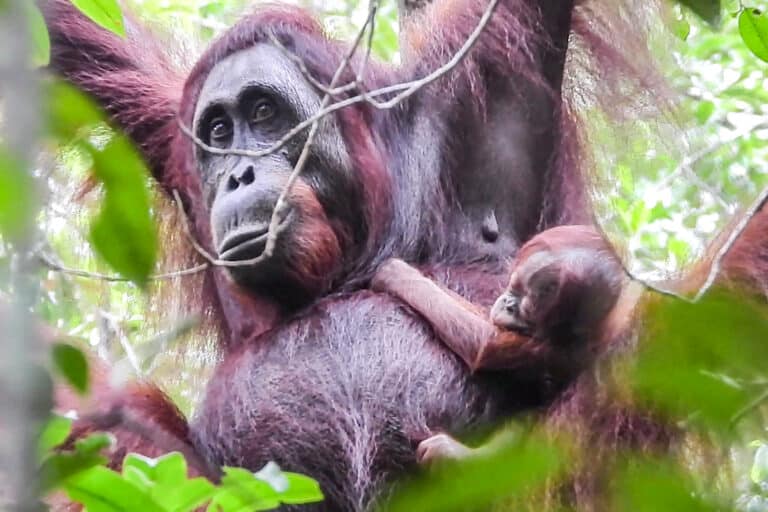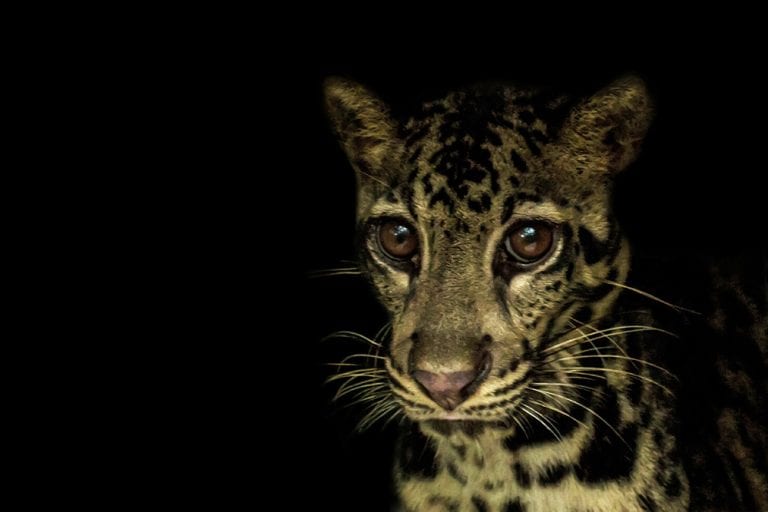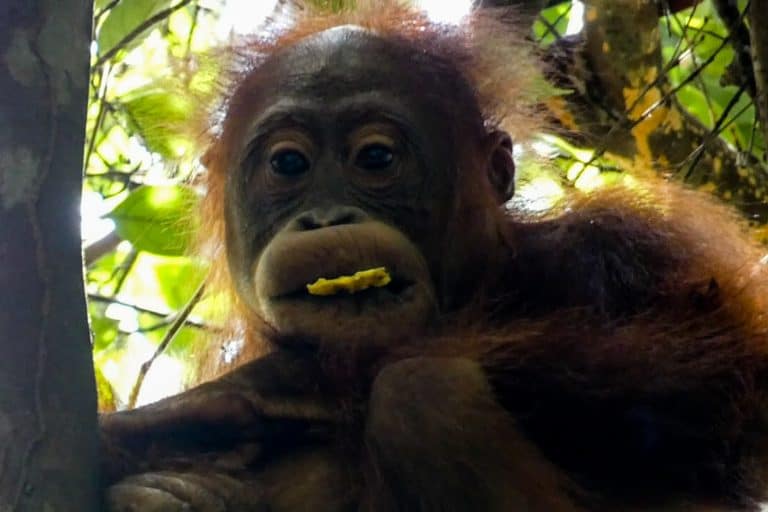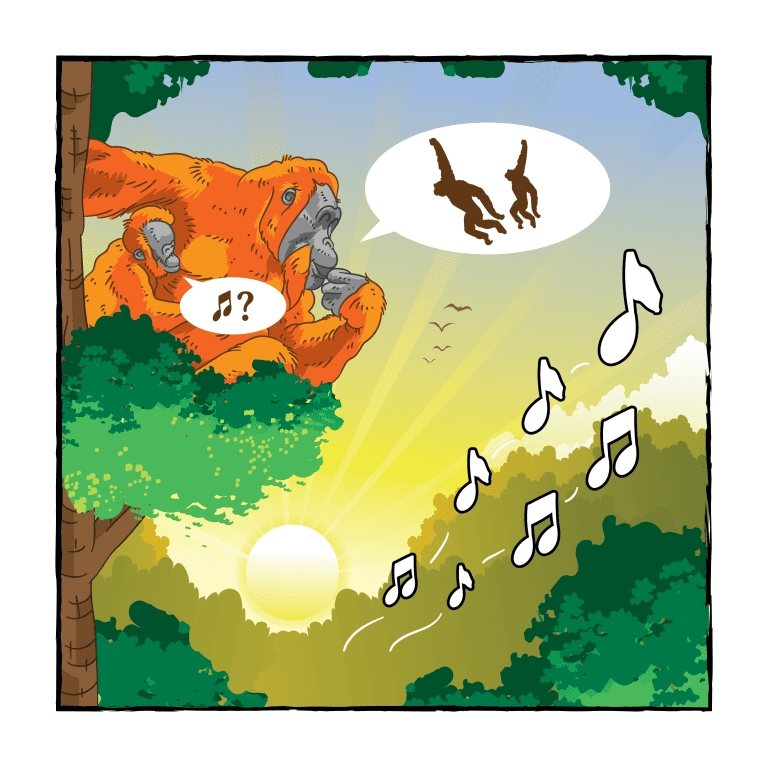Written by Eka Cahyaningrum (BNF Primate Scientist)
Red langur monkeys (Presbytis rubicunda) can be found on the islands of Borneo and Karimata. This species also lives in the Sebangau National Park peat-swamp forest where we conduct primate behaviour research and other biodiversity studies.
The babies of this species are born snow white. The young animals’ fur begins to change to reddish-orange starting with its tail. The colour then spreads over its back to the whole body, so for a short period of time, it looks quite strange with only a bright orange tail.

Adult langurs have reddish-orange fur, with a wrinkly black face and white chin that makes them look like an overthinking-grumpy monkey. There are some theories as to why these animals are born with a different fur colour than adults. It has been suggested that it keeps the youngsters safe from predators, stopping them from getting separated from their mothers and even sending out a signal to the rest of the troop that they should start to think about childcare duties.
Some experts suggest the sheer spectacle of these langurs may encourage older females to look out for – and take better care of – the babies in their group.

The plight of this entire species is certainly worth caring about. Red langurs are classified as ‘Vulnerable’ as a result of their natural habitats being destroyed by logging and forest fires, while people also hunt them for meat and keep them as pets.
Thanks to Primate Conservation Inc. (PCI) for supporting our research activity in the Natural Laboratory of Peat-swamp Forest (LAHG), a special zone within the Sebangau National Park. We will be able to conduct more population surveys of this species in LAHG and continue the research we’ve carried out for over 10 years. We will use the result to provide detailed information about the red langur monkey population and will update their current conservation status in Sebangau National Park peat-swamp forest.

Photo: Andrew Walmsley | BNF | UPT LLG CIMTROP


